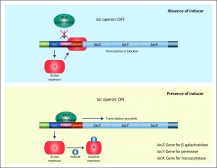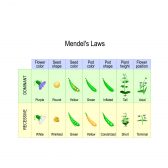Table of Contents
Definition
noun
plural: nuclear laminae or nuclear laminas
nu·cle·ar lam·i·na, ˈn(j)ukliɚ ˈlæm.ɪ.nə
(cell biology) The dense fibrillary network juxtaposes the inner face of the nuclear envelope of the cell nucleus
Details
Overview
In eukaryotic cell, the nucleus is the organelle responsible for maintaining the integrity of DNA and for controlling cellular activities such as metabolism, growth, and reproduction by regulating gene expression. It is a double-membraned organelle containing nuclear structures, such as chromatin, nuclear bodies, and nuclear matrix. The nuclear matrix is the network of fibers within the nucleus. It is the cytoskeleton of the nucleus. While the cell contains a cytoskeleton that provides structural support and a means of transport throughout the cytoplasm, the nucleus also contains fibrous scaffolding throughout in the form of nuclear matrix. One of the characteristic components of the nuclear matrix is the nuclear lamina. The nuclear lamina, in particular, is the part of the nuclear matrix. However, the nuclear lamina does not extend to the nucleoplasm. Rather, it is located next to the inner face of the nuclear envelope. The nuclear envelope is the bilipid layer that surrounds the nuclear components. The outer layer is continuous with the endoplasmic reticulum whereas the inner layer is where the nuclear lamina sits close. The nuclear pore complexes are embedded in the nuclear envelope and are anchored by the nuclear lamina.
Characteristics
The nuclear lamina is a dense fibrillary network juxtaposes the inner face of the nuclear envelope of the nucleus. It has a thickness ranging from about 30 to 100 nm. There are two major components of nuclear lamina: (1) intermediate filaments, particularly lamins and (2) nuclear lamin-associated membrane proteins. The lamins (also called nuclear lamins) are type V intermediate filaments. Type V intermediate filaments also occur in the cytoplasm, however, type V intermediate filaments in the nucleus are about 42 amino acid longer, have a nuclear localization signal at the C-terminus, and have tertiary structures. The nuclear lamins are fibrous proteins that interact with the inner nuclear membrane proteins, thus, attavhing the nuclear lamina to the interior of the nuclear envelope. There are two types of lamins, i.e. the A-type and the B-type. Nevertheless, the lamins are observed only in animals and not in other eukaryotes. The lamins are involved in the disassembly and the subsequent reformation of nuclear envelope during mitosis. They also have a role in the positioning of nuclear pores. The nuclear lamin-associated membrane proteins include both the peripheral- and the integral-types. Examples are lamina associated polypeptides 1 (LAP1), lamina associated polypeptides 2 (LAP2), emerin, lamin B-receptor (LBR), otefin and MAN1.
Biological functions
The nuclear lamina provides structural support to the nucleus. It is also involved in important nuclear events, such as DNA replication, DNA repair, cell division, cell differentiation, and apoptosis. The nuclear lamina also aids in the chromatin organization as well as in anchoring the nuclear pore complexes in the nuclear envelope.
Further reading
See also
- nucleus
- nuclear pore
- nuclear matrix
© Biology Online. Content provided and moderated by Biology Online Editors







